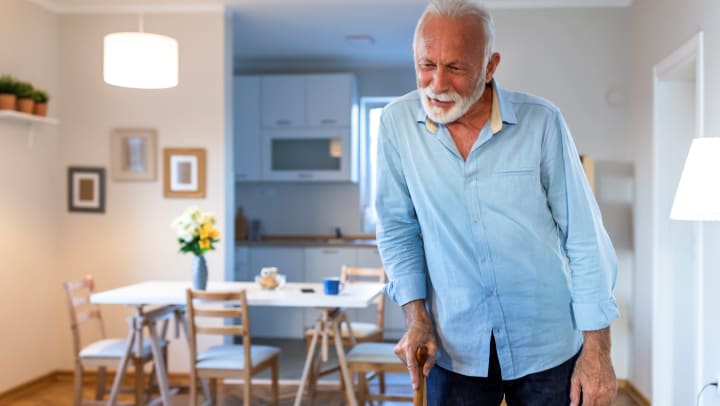Creating a safe home environment for older adults who choose to age in place can prevent accidents and provide peace of mind for their loved ones.
Safeguarding your home is a fairly simple undertaking that you can do on your own with little to no cost, depending on any home repairs or upgrades that may be necessary.
Pathway to Living professionals who are experienced at keeping seniors safe put together the following home safety tips and advice to help you get started.
Home Safety Guide
Safety Starts at the Front Door
- Before entering the home, assess the sidewalk and steps for cracks or tripping hazards and make sure railings are sturdy.
- Remove planters or decorations for a clearer path.
- Check the front door lock to make sure it is working properly.
Hallways, Stairs and Living Space
- Remove all throw rugs that may cause slips and falls.
- De-clutter to maintain a clear walking path by removing shoes, stacks of magazine and newspapers, laundry baskets or any other items in the way.
- Replace candles with safer air freshener options that don’t require electricity.
- Maintain properly working smoke and carbon monoxide detectors.
- Make sure each room has good lighting with easy-to-access switches.
- Install nightlights and/or motion activated lighting.
Kitchen
- Set up a grocery delivery service or, if shopping yourself, carry one grocery bag in at a time.
- Store dishes, cookware and food at a convenient height and use a grab bar when something is out of reach; never use a chair as a step stool.
- Don’t wear flowing sleeves when cooking and keep dish towels and paper towels away from the range.
- Keep a fire extinguisher in the kitchen and know how to use it.
- Install an auto shut-off device on the stove and finger-safe garbage disposal covers.
- Keep knives and sharp items in blocks or holders, not loose on the counter
- Clean up spills when they happen to avoid slippery or sticky floors, but don’t use wax on the floors.
- Store cleaning products and poisonous materials separately in easily identifiable containers.
Bathroom
- Install handrails and grab bars in the shower and next to the toilet.
- Add a non-skid shower matt and bench in the shower.
- Install a toilet seat riser.
- Consider using a walk-in tub.
- Dispose of old medications and use a pill organizer for current medicines.
- Remove bathroom door locks for easier accessibility for family or first responders in case of an emergency.
- Use a ventilation fan to prevent moisture build up that could cause slippery surfaces.
Bedroom
- Install bed rails and adjust bed height so it easier to get in and out.
- Avoid smoking in bed.
- Keep a lamp on the bedside table and use nightlights.
- Place your phone and charger within reach of the bed.
- Add a sturdy chair for dressing and support.
- Remove any cords, throw rugs or furniture from the path to the bathroom.
General Safety
- Post an emergency phone number list in each room.
- Consider using a safety alert service with a wireless remote devise.
- Look into installing a home safety alarm system.
- Set the water heater to 120 degrees to prevent scalding.
Good for You for Putting Safety First!
Falls are one of the most common sources of injury among older adults, and, by taking these safety measures, you may prevent a fall or other accident in the home.
If you’d like more information about safeguarding your home, the AARP’s free “Home Fit Guide” offers more smart ways to make a home comfortable, safe and a great fit for older adults—and people of all ages.
Download AARP’s Home Fit Guide here.

